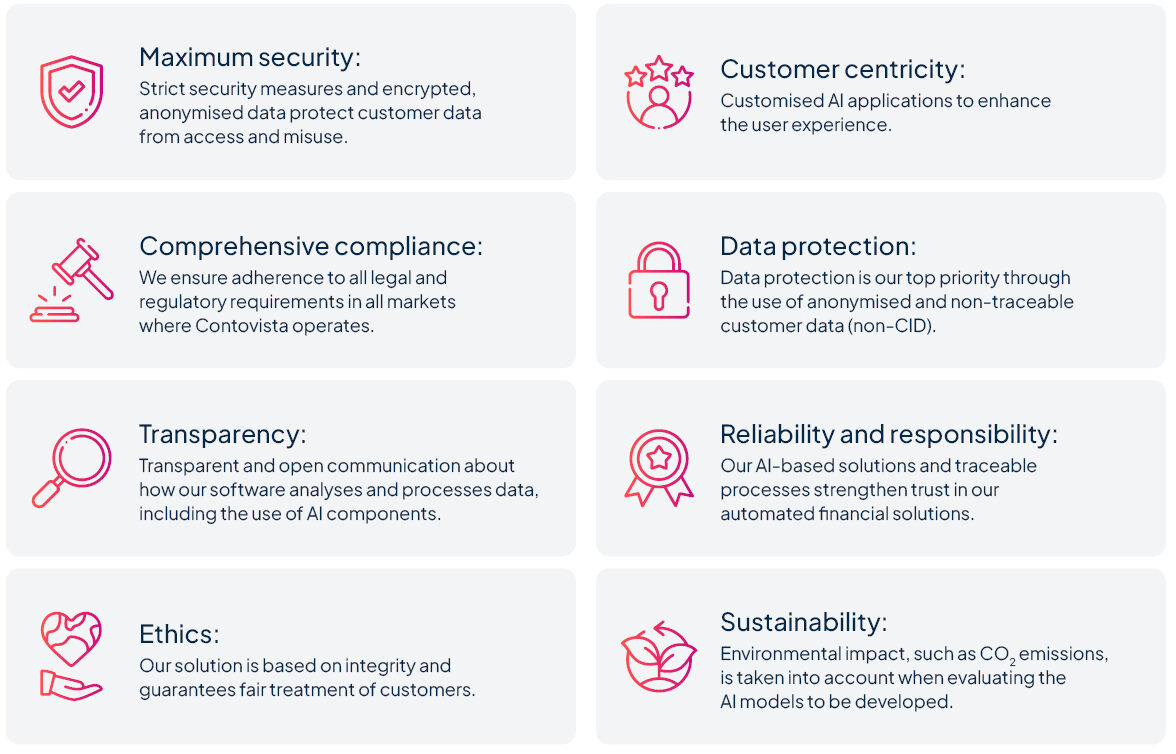AI Principles
For a responsible use of AI.
For a responsible use of AI.
Data-driven Banking through responsible AI
We shape the financial industry into a seamless and secure ecosystem to unlock its full potential. Therefore, we’re committed to leveraging the power of data and AI for the benefit of our customers. To ensure ethical and responsible development and use of AI, we have established clear AI principles which guide our approach.
Our AI Principals
These principles serve as a foundation for building trust and transparency, allowing us to develop and implement responsible AI solutions across our data-driven banking offerings.

Contovista´s AI Principles at a Glance.
Privacy by design
All models are based on non-CID data. Processing is GDPR-compliant and prepared for future regulations such as the EU AI Act.
Shared Learning Effect
The model quality is improved through continuous training with anonymized data. This results in more robust models that significantly reduce bias and overfitting.
Explainability & Control
Our AI is fully comprehensible. All models are documented, versioned and auditable. Banks manage the configuration and scope of application according to their own risk and compliance strategy.
AI for a better customer experience: precise, scalable, self-learning
Our AI architecture brings together multiple methods to form a modular system. The outcome: maximum data quality, scalability and predictive power:
- Generative AI & LLMs: LLM-based pipelines standardize transaction data and automatically generate meaningful labels (“Pretty Names”), add logos and suggest suitable merchant or counterparty categories. The result: cutting-edge databases as a basis for relevant insights. LLM-supported financial analyses process queries from customers about transactions, carry out the necessary analyses and present the results directly and comprehensibly in natural language.
- Supervised Learning: Trained models predict for example travel spend, contract renewals or product awareness – for data-based lead generation and seamless integration into existing CRM processes.
- Unsupervised learning: Clustering algorithms identify customer segments based on behaviour, life events and financial patterns – for precise targeting and product optimization.
- Probabilistic models: Modeling of uncertainties enables robust forecasts, for example on liquidity, churn probability or the use of value-added services.